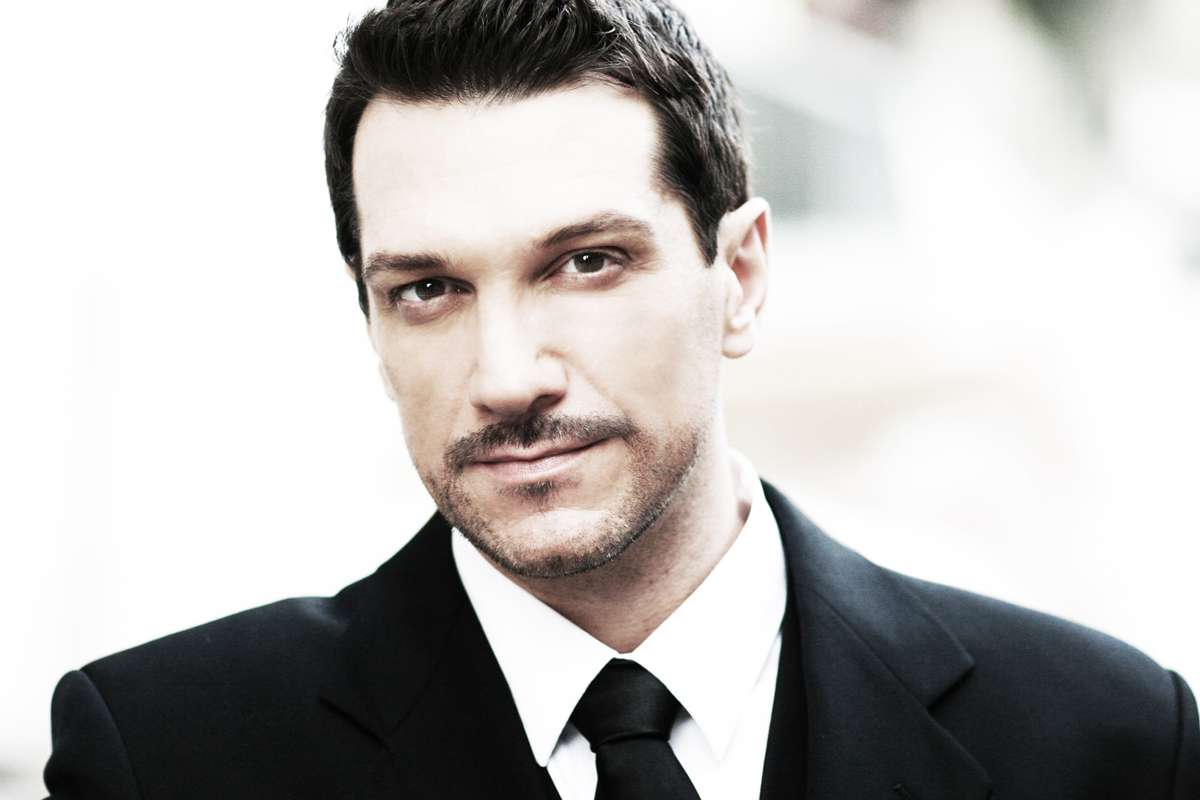|
Back
Endless, Timeless, and Crazy Love New York
Café Carlyle
01/10/2012 - and January 11, 12, 13, 14, 17, 18, 19*, 20, 21, 24, 25, 26, 27, 28, 2012
Selected Songs by Burton Lane, Gino Paoli, Sigmund Romberg, George Gershwin, Frederick Loewe, Tom Jobin, Maury Yeston, Astor Piazzolla, and Richard Rodgers
Paulo Szot (vocals)
Billy Stritch (Music Director, Arranger and Pianist), David Finck (Bass), Dave Ratajczak (Drums) 
P. Szot (© Laura Marie Duncan)
Music has been integral to the life of the venerable Carlyle Hotel since the Broadway composer Richard Rodgers became its first tenant. The heart of this musical life is the Café Carlyle, an elegant, intimate space with murals by Marcel Vertès. Over the years, the supper club has featured cabaret greats from Bobby Short to Ute Lemper. Currently, the artist in residence is the marvelous and marvelously versatile Brazilian baritone, Paulo Szot.
In the space of two years, I have seen Szot in a remarkably diverse series of roles and locations. He made his Metropolitan Opera debut in Shostakovich’s The Nose as Kovalyov, a petty bureaucrat who awakens one day to find that his nose had disappeared only later to reappear as government official of higher rank. This was an extraordinarily difficult role and Szot ably rose to its many vocal and dramatic challenges as well as to its prodigious endurance requirements. This past May, I saw Szot at Carnegie Hall performing songs from musical theater with Deborah Voigt and the Collegiate Chorale. In September, I saw him in London where he reprised his Tony Award winning role of Emile de Becque in Rodgers and Hammerstein’s South Pacific. In March, Mr. Szot returns to the Metropolitan Opera as Lescaut, first in New York and then worldwide in HD, in the Met’s new production of Manon.
At the Carlyle Mr. Szot was so much more than a big voice in a small room. While his operatic talents (particularly the creation of characters and the communication of emotion) were on display, he used all of his musicality and natural vocal gifts to give a mesmerizing performance, perfectly calibrated (for content and context) in songs running the gamut from Broadway standards and vintage Hollywood musicals, to selections from his native Brazil and other South American countries. Disparate as the songs and styles definitely were, there was a common thread to it all – utter authenticity.
Szot has a large and richly colored voice, just a beautiful sound plus impeccable technique – smooth line, dynamic shading, excellent diction and perfect phrasing that captured the nuances of the text – the full range of feelings evoked by love, from longing to regret to wistfulness to excitement and even intoxication. The program as a whole was thus a celebration of life and love in all its guises – with nothing staid, nothing formal. Mr. Szot seemed very much to live the experience of the characters he was portraying. The creation of these discrete characters in the course of a one-hour program with so many disparate songs speaks of a supremely talented artist.
He began the evening with “Old Devil Moon” by Burton Lane, one of several songs by this composer. Szot told us it was his tribute to Lane on the 100th anniversary of his birth. His mastery of dynamic nuance was particularly evident here. I was also struck by the jazz arrangement of “Lover Come Back To Me,” The impeccable jazz phrasing seemed to explode the usual lyric line, giving the song heightened excitement and emotional urgency. Here and, indeed, for the entire evening, kudos to Billy Stritch for his superb arrangements and his performance at the piano, ably assisted by his colleagues, David Finck on bass and Dave Ratajczak on drums.
For me, the best part of the evening came in two selections of contrasting mood and style from Lane’s Carmelina. It was both appropriate and interesting that these were originally sung Cesare Siepi. “It’s Time for a Love Song” was simply stunning, particularly the end with its gorgeously floated final note. In the title song, Szot pulled out all the stops, fully engaging the audience. Indeed, he seemed to have all of us eating out of his hand the rest of the evening. The comic instinct he showed in “Carmelina” was also on display in another gem, a tango by the Argentine composer Astor Piazzolla, “Balada Para Un Loco” – a highly declamatory, creation of character. Szot’s evocation of “crazy love” was almost hallucinatory in its depiction of the character’s mental state.
This evening made the third time I’ve heard “This Nearly was Mine” from South Pacific performed by Mr. Szot. Twice before, he was accompanied by a full orchestra. This time it was very different – just as beautiful, but scaled back and suitably intimate for a setting that allowed us to see that Szot had tears in his eyes.
The website of Paulo Szot
Arlene Judith Klotzko
|